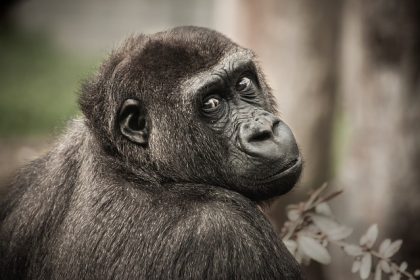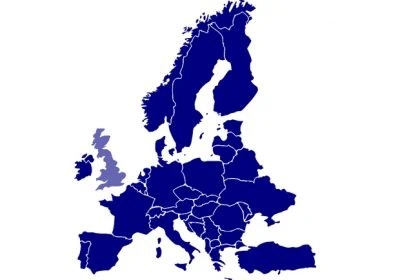Two European patents with claims on genetically modified apes were severely restricted by the EPO yesterday, and the claims on genetically modified animals are to be deleted. A decision that sends a signal on laboratory animals in research.

Yesterday, after years of proceedings, two patents of the U.S. company Intrexon Corporation (now: Precigen) on genetically modified great apes were severely restricted by a decision of the European Patent Office (EPO). The two contested patents as such still exist, but they may no longer refer to great apes, the press council reported. There shall be no European patent on genetically modified apes.
This is a decision with signal effect for laboratory animals in pharmaceutical research and basic research. This is because the EPO decision has, for the first time, severely restricted the European patenting of genetically modified animals. Although the decision does not prohibit the patenting of genetically modified animals or even laboratory animals in principle, it could now be made subject to strict requirements.
Broad alliance of plaintiffs against patent on great apes
Hundreds of thousands of animals are used as laboratory animals every year and many of them are genetically modified for this purpose. Accordingly, the lawsuit against the two patents on great apes was supported by a broad alliance of nature and animal protection organisations and even with research associations. Plaintiffs against patent owner Intrexon included the Albert Schweitzer Foundation, Testbiotech, the German Animal Welfare Association, the Gen-ethical Network (GeN), the Society for Ecological Research, the German Animal Welfare Association, the Wild Chimpanzee Foundation Germany (WCF), the Jane Goodall Institute (Germany), Kein Patent auf Leben!, Bundesverband Menschen für Tierrechte, Pro Wildlife, but also the Swiss Alliance Gentechfrei (SAG) and the Swiss Animal Protection Society (STS).
The oppositions were filed in 2012 and 2013 and concern patents of the U. S-. company Intrexon (now: Precigen) (EP1456346 and EP1572862).
‘Patent on apes’ is a patent on gene expression
The two contested patents are public now as the ‘patent on apes’, but in fact describe a system for modulating gene expression. There is a need in technology for improved systems for the precise modulation of the expression of exogenous genes in both plants and animals, the patent description states, especially in gene therapy and for the production of proteins and antibodies in necessary large quantities and for the regulation of traits in transgenic animals.
In detail, the patent (EP1456346) presents an ecdysone-receptor-based gene expression system that can be induced in mammalian cells in partnership with a vertebrate retinoid X-receptor (RXR). In other words, the ecdysone receptor isolated from the insect silk moth Bombyx is to be inserted into the DNA of mammals – in this case apes. In this way, genetically modified laboratory animals for research will be created, which can be easily influenced by treatment with chemical substances in the sense of the research task. This is called a “gene switch” in which epigenetic mechanisms decide whether they are active or inactive. This is a procedure that has been absolutely common in cellular and genetic research.
The problem with the two patents is not the gene expression system, but the patent claims on the great apes and other experimental animals modified in the manner described. This, however, contradicts Art. 23 EPC together with Art. 53 EPC, according to which “processes for modifying the genetic identity of animals which are likely to cause them suffering without substantial medical benefit to man or animal, and animals produced by means of such processes” are expressly excluded from European patent protection. In the view of the EPO, this benefit did not exist.
Moreover, no European patent will be granted for biotechnological inventions involving clones or human embryos.
Dispute about patent on apes dragged on for years
The oppositions of the alliance against the two patents dragged on for years. In 2015, the oppositions were initially rejected. The alliance appealed against this. And indeed, at the end of 2019, the Board of Appeal signalled that the appeal was upheld. The patentee thereupon agreed to delete all patent claims on genetically modified animals.
With the decision announced yesterday by the EPO, the Board of Appeal has now decided this case. As usual in such proceedings, the two cases concerning the contested patents (T0682/16 and T0789/16) will now be referred back to the examining division. The protection for the two patents will only be maintained in an amended, limited form. The patentee must therefore delete all patent claims relating to animals.
Important decisions on patents on life
The EPO’s decision follows only a few days after the remarkable decision of the Enlarged Board of Appeal regarding biopatents – we reported. According to this decision, Art. 53(b) EPC is to be interpreted “dynamically” from now on, the Enlarged Board of Appeal reversed its landmark decisions G 2/12 and G 2/13. The background to this is that, although no European patent protection is granted under Article 53(b) EPC for plant varieties or animal breeds and for essentially biological processes for the production of plants or animals, the Enlarged Board of Appeal has decided to give a “dynamic” interpretation of Art 53(b) EPC. However, microbiological processes and the products obtained by means of these processes are patentable under Article 53(b) EPC.
And the highest European Court of Justice (ECJ) did also make an important ruling on this subject until 2018: in its ruling (EU:C:2018:583) the ECJ counts mutagenesis as genetic engineering.
Do you need assistance in patent protection for biotechnological, genetic or chemical processes?
Our attorneys have many years of expertise in patent law as well as in the entire field of intellectual property and are authorized to represent you before any office or court – in Germany and internationally.
Please contact us if you are interested.
Sources:
Image:








Leave a Reply